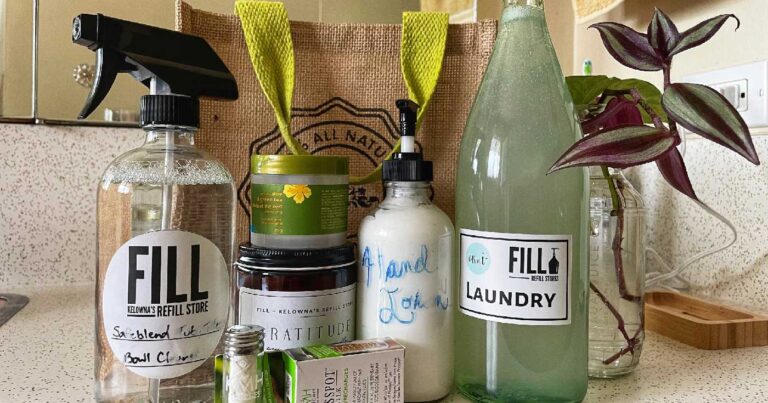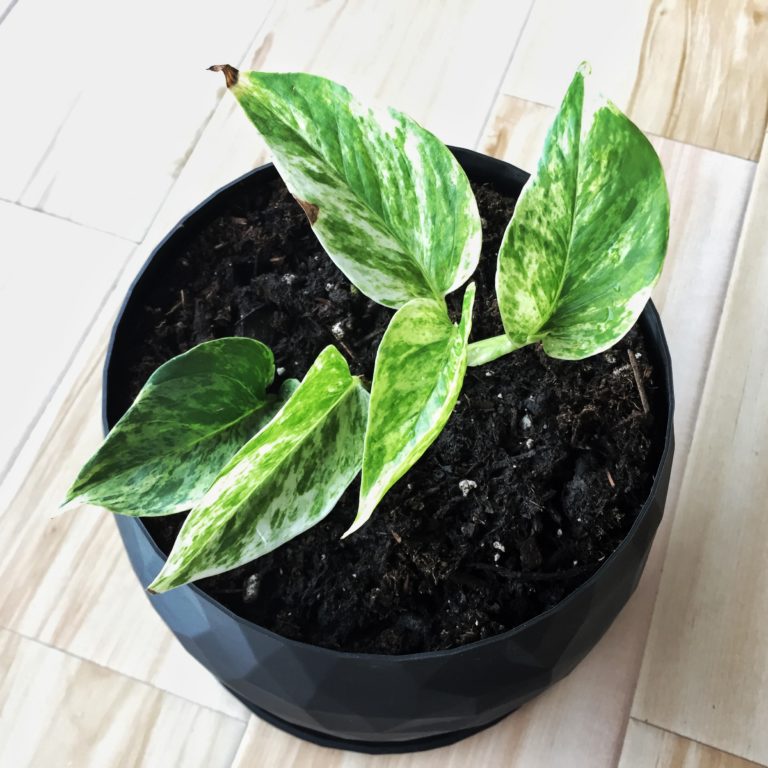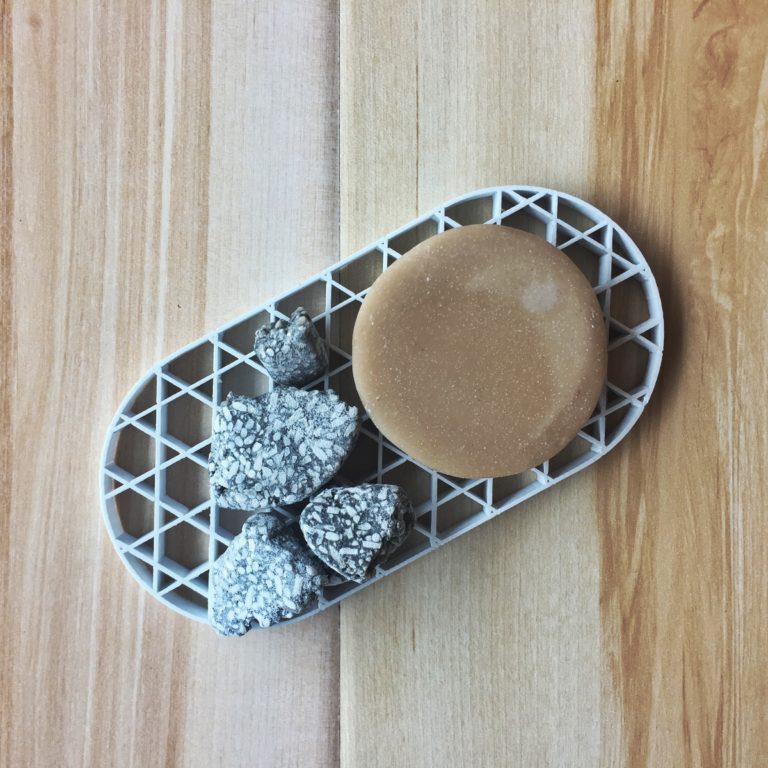Recycling will never be a good solution…as long as we have 10-cent bottle returns!
I was reminded today of the fallacy of recycling. (So dramatic, I know…stay with me – this one’s a thinker. 😇 )
One of my favourite refilleries in town posted a fun video to social media they made of their staff running away from plastic packaging as it chased them around the store. It made me laugh, but it also spoke the truth: we can’t recycle our way out of our consumption habit.
Recycling: an inside job?
It’s not a new idea – that recycling isn’t the golden solution we’ve made it out to be – but it’s only recently gotten the public’s attention (thanks in part to this investigative report from NPR and PBS Frontline). Turns out, the oil industry really did lie to the public about recycling and nope, it’s not a conspiracy. (for a blast from the past, check out this post I wrote in 2010 (!!!) about bottle bill legistlation in the US)
But, it’s easy to forget news like this when we actually go about our daily lives. Recycling is easy, convenient even. (although these days it feels like you need a flow chart to understand where certain items go!) I discovered the convenience factor today on a trip to my local bottle depot, which has just installed some fancy new technology to make returning bottles and cans cleaner and easier.
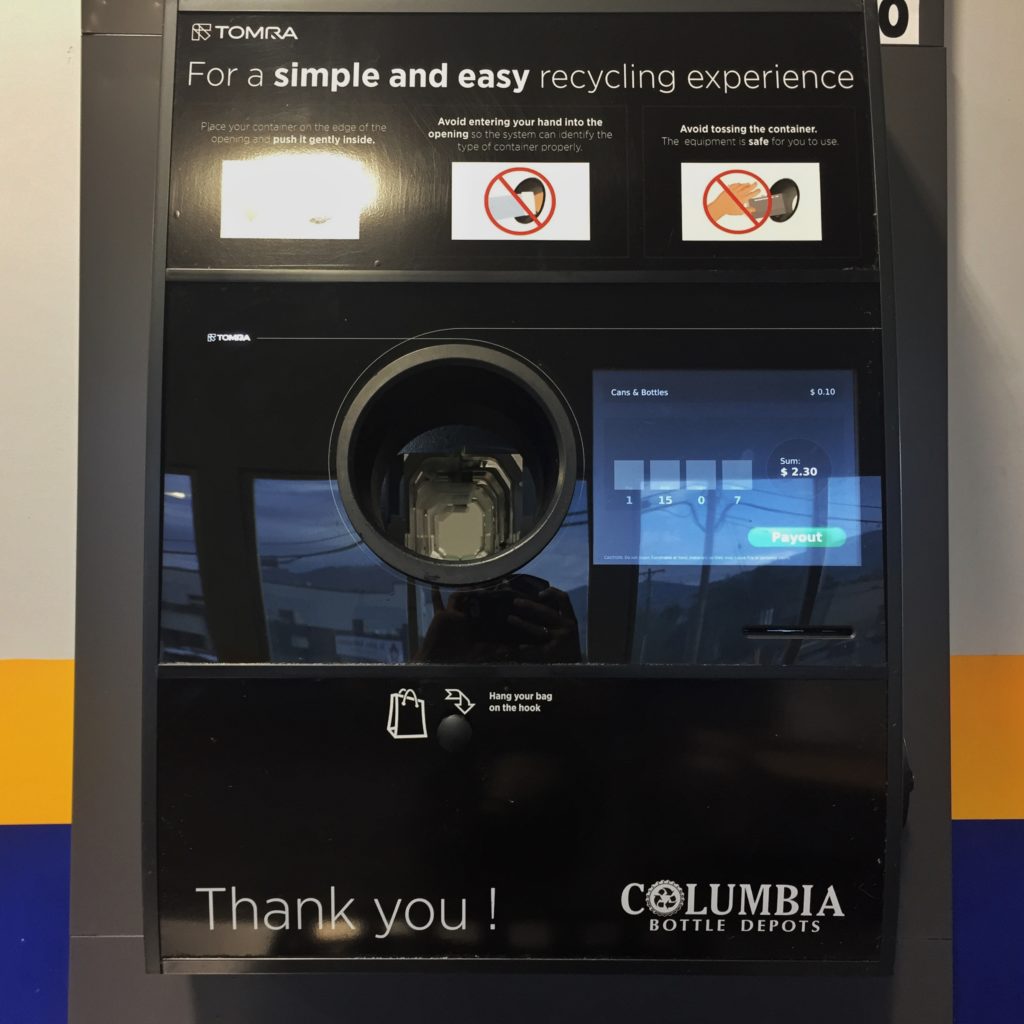
This automated system (by a company called TOMRA), “features cutting-edge reverse vending solutions, automated counting and sorting systems and a faster, cleaner, and simple recycling experience!” and to be honest, even I was a little wowed. I mean…it’s pretty cool to watch a bottle be whizzed away on a conveyor belt, quickly and efficiently popped into the appropriate bin with puffs of air and whirring electronics.
I hadn’t seen machines like this one since I lived in Maine, where similar systems exist in grocery stores, making for even more convenient recycling. In one way, it was refreshing? Finally, we’ve modernized recycling.
Crunching the Numbers
Then I started really looking at the numbers and…I kinda cringed. Well, let me back up. The numbers haven’t changed. We still only receive between 5-20 cents for our returnables (see here for a full list). I was just seeing the values more directly with this new machine. And it really made me scratch my head.
Do you know how much a case of soda or beer costs? How about a nice, locally sourced bottle of wine? Or even a cheap bottle of wine! What about a box of orange juice or a bottle of V8?
I don’t think I have to tell you that all of those options cost more than 10 cents.
So how. on. earth. do we expect everyone to actually take the time to return their bottles and cans for refunds if the incentive is so low it’s hardly worth it? And on the other hand, for those that do take the time to return their recycling, is it actually worth it? For the bags of bottles we return and the $50 we made, how much did we have to spend to get that amount? Or over how many days or weeks did someone have to collect empties just to make a few dollars? I suppose that depends on our motivations, or needs.
Zero Sum Game
Speaking of needs, there are, of course, those in need who collect these kinds of containers, and entire bottle drives depend upon us donating our empties. So, we shouldn’t do away with deposits, one might say. One might be right, although I have some issues with these systems as well (like perpetuating poverty and environmental solutions that aren’t really solutions). But here I am! At the bottle depot! Up until today, I kind of enjoyed the occasional trip here, enjoyed the satisfaction of putting my materials in the right place. Doing the right thing and feeling like I did my part to clean up my mess. (And, the financial return is of course nice.) But today, for some reason, it felt a bit like a farce.
Initially upon writing this, I had the idea that higher bottle deposits would be a good solution to talk about. We consumers spend money on these products and deserve to get more back in return, right? Higher deposits mean a greater incentive to “do the right thing,” right? Now, I’m not so sure. Based on current trends, I’d say higher deposits might just make us want to consume more. And really, it’s distracting from the point: there is no “one solution” to our consumptive nightmare. If we incent recycling, we also have to keep feeding the machine. Recycling is not a something that we’ll do and then be done with. It will continue as long as we continue consuming. That was very apparent today in that bottle depot, full of humming technology. The belts only run if there are things to feed it. Recycling falls apart if we stop the linear consumption model. (Imagine being able to pop into a winery and refill your clean, empty wine bottles?)
Final Thoughts
Today was garbage day in my neighbourhood and as I was out for an afternoon run I noticed a bottle cap lying on the ground. After this day of pondering recycling, there it was, evidence of the fallacy right in front of me. We try so hard to do the right thing but when there is so much of this stuff and it’s so ubiquitous, it’s hard to keep track of it all. We don’t notice bottle caps jostling out of our bins because why would you notice a bottle cap rolling away? They are small and unremarkable.
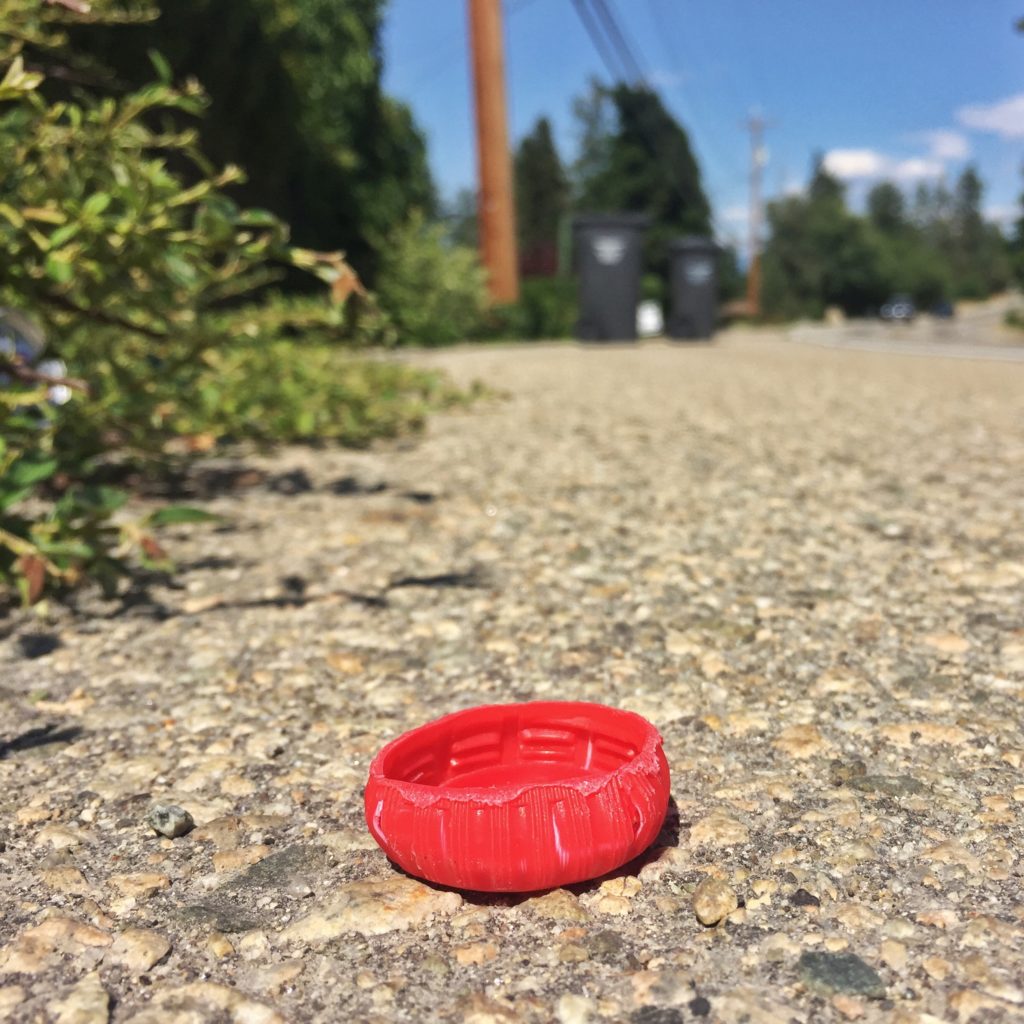
So what to do? Well, let’s not bury our heads in the sand! I’m going to casually suggest that we all calm down around recycling and REthink it a little more. Sure, keep on collecting returnables and gathering refunds for groceries, fun, or donations. There is a time and a place for all that jazz. BUT. If we take recycling out of the picture, what’s left?
Reduce. Reuse. Refill. Repair. Refuse. And ah yes, Rethink!
Turns out, there’s lots of alternatives. Alternatives that are regenerative, that probably give us back more than 10 cents (or, that save us much more than 10 cents!). They just require some creative thinking to implement, especially where our tasty beverages are concerned. (Who’s ready for that refillable wine bottle? 🙋🏼♀️ )


